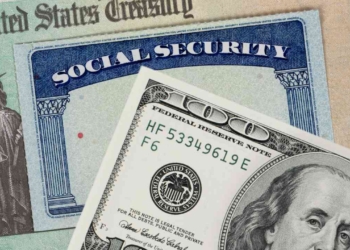In August 2025, there are still two payment dates pending for Social Security beneficiaries in the United States. According to the payment schedule, beneficiaries whose birthdays fall between the 11th and 20th of the month will receive their payment on August 20 (the third Wednesday of the month).
Meanwhile, those with birthdays between the 21st and 31st will receive their deposit on August 27 (the fourth Wednesday of the month). These are two groups of beneficiaries who requested their Social Security payments after May 1997, when the system switched to birthday-based payment allocation.
Let’s not forget that, on the second Wednesday of the month (August 13), payments were sent to beneficiaries in this category, but whose birthdays were between the 1st and 10th of any given month.
The maximum Social Security payment in August 2025
According to official data from the Social Security Administration (SSA), and taking into account the 2.5% cost-of-living adjustment (COLA) that will take effect through 2025, maximum Social Security retirement payments amount to a ceiling of $5,108, a magic number reserved for fewer than 5% of beneficiaries who had 35 years of income at the taxable maximum each year and who delayed their retirement until age 70.
This maximum amount is far from the more realistic average currently received by beneficiaries, which is approximately $1,580 for disability (SSDI) benefits and $1,976 for retirement benefits. The maximum for those who retire at full age (between 66 and 67, depending on the year of birth) is $4,018.
For SSI (Supplemental Security Income) recipients, there was a double payment in August: the first on August 1 (corresponding to August) and another on August 29 (earlier for the Labor Day holiday, which falls on September 1). The maximum SSI benefit is $967 for an individual recipient and up to $1,450 for a couple receiving the payment jointly.
How much will Social Security benefits increase in 2026?
Projections for the Social Security cost-of-living adjustment (COLA) in January 2026 present a remarkably diverse picture, according to the analysts surveyed. The Senior Citizens League (TSCL), whose estimate of 2.5% for 2025 proved accurate, has revised its calculations upward in recent months.
Its current forecast, based on July 2025 data, stands at 2.7%, reflecting more persistent inflation than initially expected. It is worth noting how this organization has progressively adjusted its forecasts: from 2.5% in April to 2.6% by midyear, and finally settling at 2.7% in its latest update.
This perspective is echoed in specialized media outlets such as CBS MoneyWatch, where several economists, including Mike Lynch of Hartford Funds, agree that the 2026 COLA could remain at similar levels to the current one. If this 2.7% increase materializes, it would represent an average monthly increase of $54.18, raising the typical retirement benefit from $2,006.69 to approximately $2,060.87.
However, other voices take a more cautious stance. MarketWatch projects a range between 2.2% and 2.3%, arguing that the recent drop in energy prices could moderate inflation during the third quarter. Meanwhile, some early estimates by TSCL itself suggested a 2.3% or 2.4% rate, although these figures were later revised.







